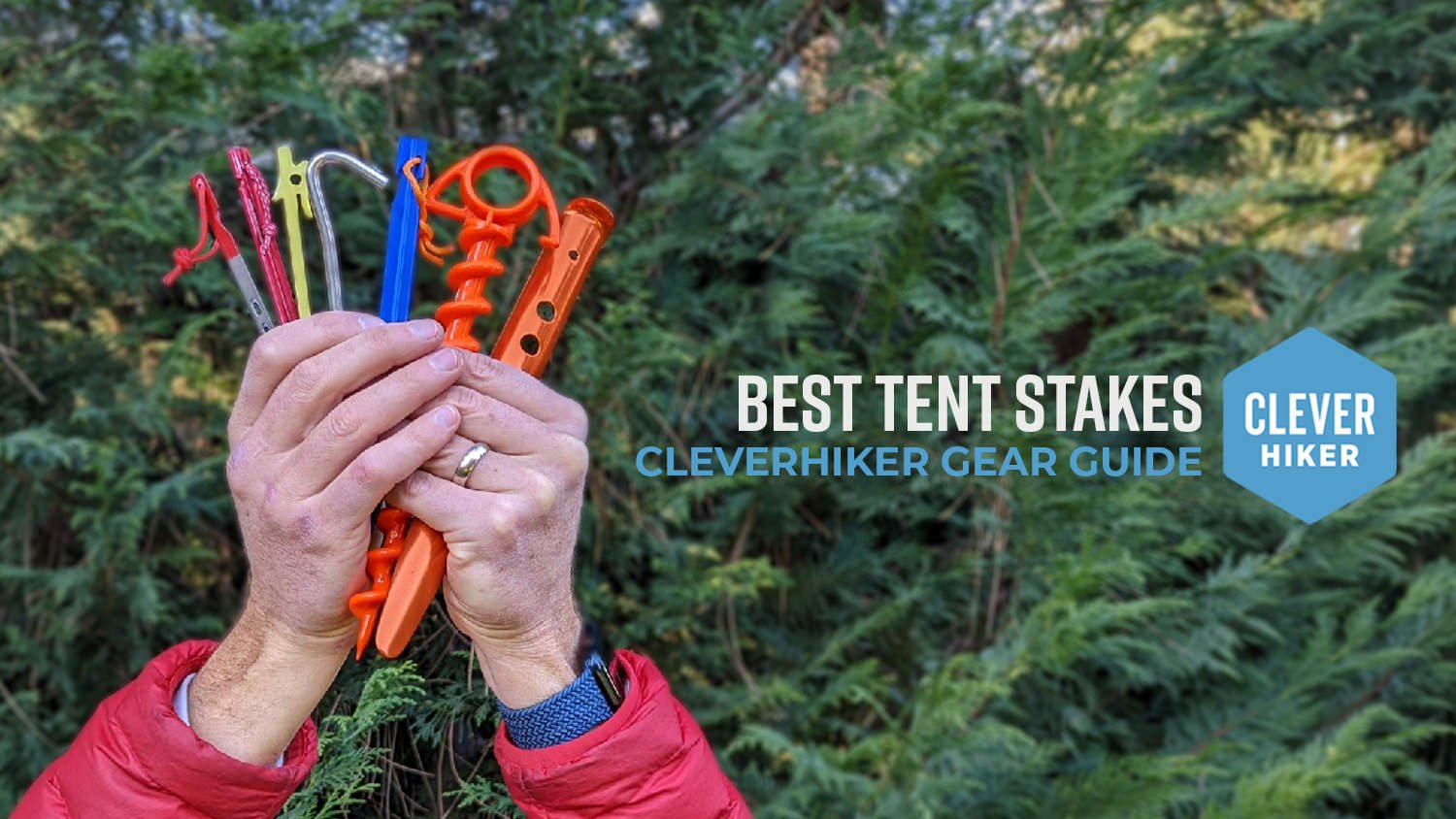
Best Tent Stakes of 2023
Tent stakes are some of the smallest, but most important items in your outdoor kit. Your tent stakes will secure your shelter through high winds and driving rain, so it’s critical to have a set you can trust. Some folks also like to swap out the stakes that come with a tent in favor of some that’re lighter or more durable. And chances are, at some point you’ll end up needing to replace a few bent or lost ones.
We don’t like to toot our horns, but we’re kinda tent stake badass experts. We’ve used more types of tent stakes in more types of terrain than any group of outdoor nerds really has any business doing. So whether you’re in the market for a set to kit out a tent that doesn’t come with stakes, wanting to make an upgrade, or needing to replace a few bent or broken ones, we’ll help you find the best tent stakes for your needs.
Last updated: September 28, 2023

The ultralight MSR Mini Groundhogs have great holding power in most types of terrain
Quick Recommendations
Check out this quick list of our favorite tent stakes if you’re in a hurry, or continue scrolling to see our full list with in-depth reviews.
- Best budget tent stakes: All One Tech Aluminum Stakes
- Best hook tent stakes: REI Aluminum Hook
- Best balance of low weight & strong holding power: MSR Groundhogs / Mini Groundhogs
- Best heavy-duty tent stakes for car camping: REI Steel Stakes
- Best ultralight tent stakes: NEMO Airpin
- Ultralight tent stakes that work well in rocky/compact ground: Vargo Titanium Shepherds Hook
- Best snow stake: REI Snow Stakes
- Ultralight tent stakes with great holding power: Zpacks V Stakes
- Lightest tent stakes: MSR Carbon Core
- Best tent stakes for anchoring large shelters in soft ground: Orangescrew Anchors

If you’re looking to go as light as possible, the Vargo Titanium Shepherds Hook are a good choice
What’s Most Important to You in a Tent Stake?
PRICE– The material of a tent stake will generally determine the cost. Steel stakes are an affordable option for frontcountry camping, and they’re super durable. Plastic stakes are typically the cheapest, but they’ll also be some of the least durable and versatile. Aluminum stakes are an awesome value because they have a great balance of low weight, durability, and versatility. Ultralight tent stakes made from titanium and carbon fiber can get pretty spendy.
- Best value tent stakes: MSR Groundhog & MSR Mini Groundhog
- Best budget tent stakes: All One Tech Aluminum & REI Steel Hook
- Best high-end tent stakes: NEMO Airpin, REI Snow Stake & Orangescrew Anchor

The All One Tech Aluminum stakes are affordable and have excellent holding power in almost every type of terrain
WEIGHT/DURABILITY– Steel stakes are the strongest, but they’re heavier than we like for backpacking. Aluminum offers a great balance of weight and durability, so they’re typically a good choice if you’re not concerned with saving every gram of pack weight. Titanium stakes are ultralight, but they will bend relatively easily. Carbon fiber stakes are usually the lightest weight, but it can be risky to rely on them solely since carbon fiber snaps rather than bending.
- Best ultralight tent stakes: MSR Groundhog, MSR Mini Groundhog, NEMO Airpin, Vargo Titanium Shepherds Hook & Zpacks V Stake
- Best lightweight tent stakes: All One Tech Aluminum & REI Aluminum Hook
- Best heavy-duty tent stakes: REI Steel Hook, REI Snow Stake & Orangescrew Anchor
- Best balance of weight & durability: NEMO Airpin, MSR Groundhog & REI Aluminum Hook
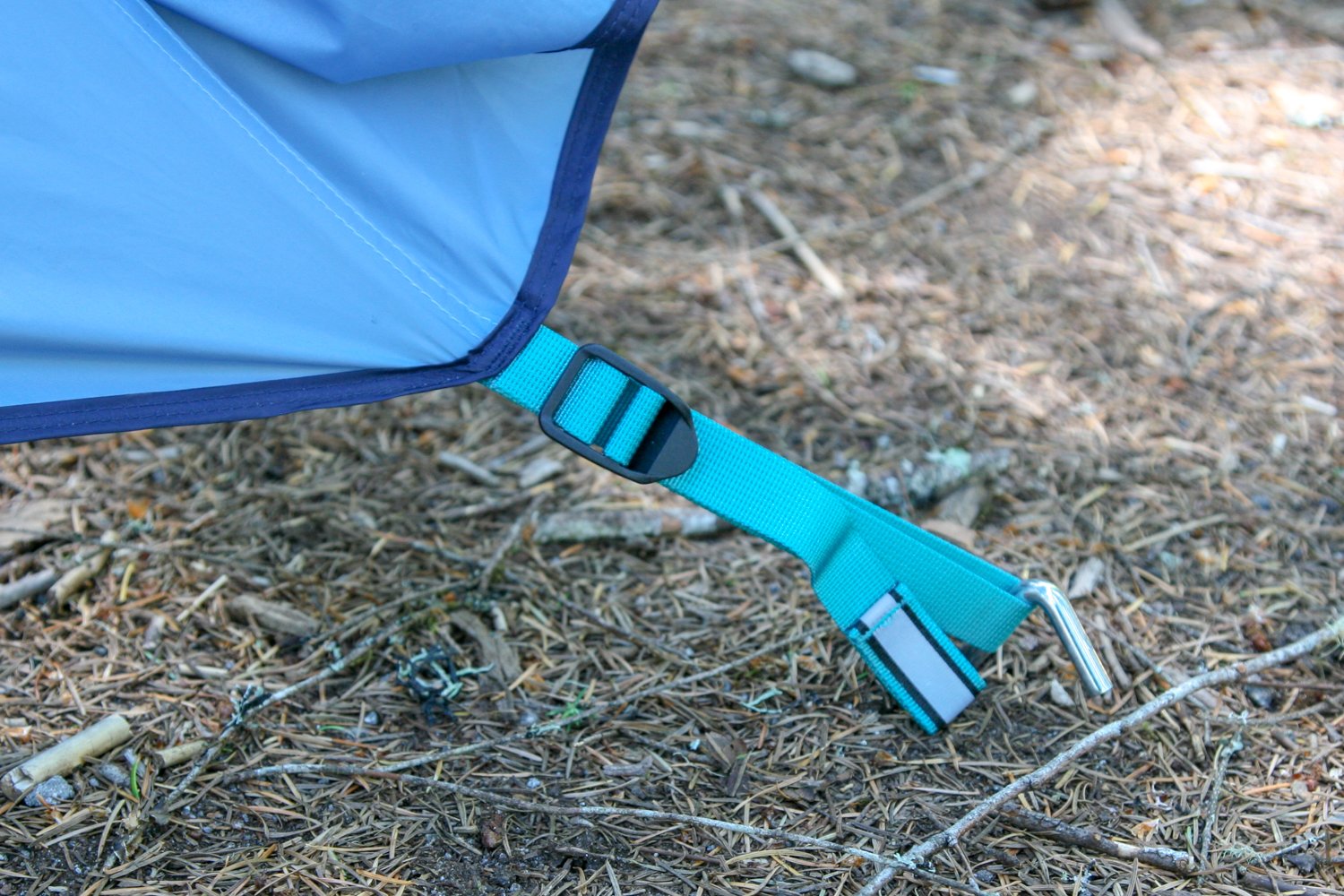
The heavy-duty REI Steel Hooks are perfect for holding down heavier camping tents
BEST USE – Shape and length will tell you a lot about what terrain a tent stake will excel in. Y-shaped stakes are difficult to bend and hold really well in packed soil, but their wider shape may make them tougher to get into rocky terrain. V-shaped stakes – especially the kind with holes running along the shaft – and screw stakes do very well in sand and snow. Hook and nail stakes can be easier to use in rocky soil, because they’re narrow. But their holding power isn’t as good. Generally, the longer the tent stake, the better the holding power.
- Best tent stakes for backpacking: All One Tech Aluminum, REI Aluminum Hook, MSR Groundhog, MSR Mini Groundhog, NEMO Airpin, Vargo Titanium Shepherds Hook & Zpacks V Stake
- Best tent stakes for car camping: REI Steel Hook, All One Tech Aluminum, REI Aluminum Hook & MSR Groundhog
- Best tent stakes for sand: REI Snow Stake, Zpacks V Stake & Orangescrew Anchor
- Best tent stakes for snow: REI Snow Stake

The Orangescrew Anchors are a great choice for car camping trips when you expect high winds
Best Tent Stakes of 2023
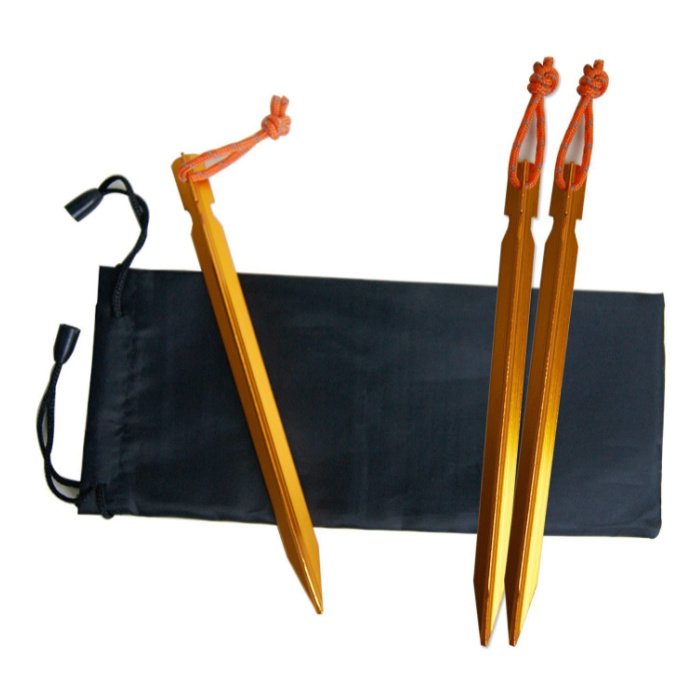
BEST BUDGET TENT STAKES
COST PER STAKE: $0.83
WEIGHT: 0.53 oz.
LENGTH: 7 in.
BEST USE: All-around
PROS: Affordable, lightweight, versatile, good holding power, high-visibility pull cord for easy removal, stuff sack incuded
CONS: Y stakes can be a little more difficult to use in rocky terrain
BOTTOM LINE: For those on a budget, the All One Tech Aluminum Stakes are an excellent option. These Y-shaped stakes are longer than a lot of other stakes, so they have some of the best holding power you can get in almost any type of terrain. On top of that, the length makes them suitable for both backpacking and car camping. They may be a little heavier and bulkier than ultralight stakes, but the All One Tech stakes’ balance of low weight, excellent holding power, and affordable price is pretty hard to beat.
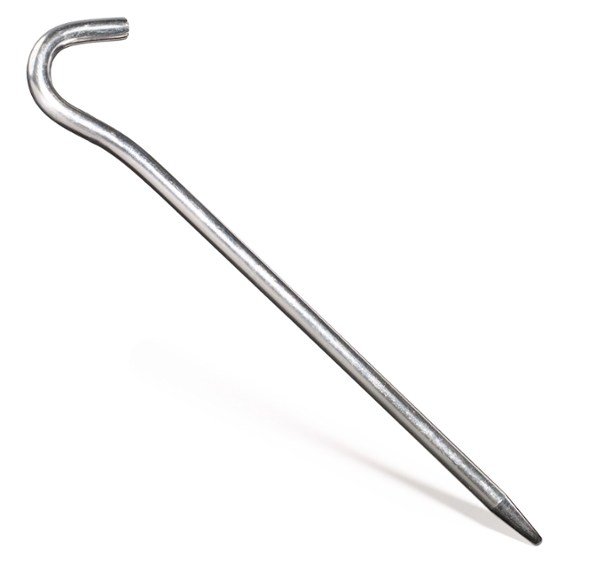
BEST HOOK TENT STAKES
COST PER STAKE: $2
WEIGHT: 0.5 oz.
LENGTH: 7.25 in.
BEST USE: All-around
PROS: Affordable, lightweight, versatile, durable, length/width means they’ll hold well in most terrain, easy to drive in/pull out
CONS: Not as good in loose sand
BOTTOM LINE: If you’re looking to get one set of stakes that will work for pretty much any occasion, do yourself a favor and pick up a handful of REI’s Aluminum Hook Stakes. They’re light enough for backpacking, strong enough to hold down large camping tents, and their shape and length mean they’ll work in pretty much any type of terrain. Gram counters can definitely go lighter with titanium or carbon fiber stakes, but we think the added durability and money saved by going with these aluminum hooks is worth the minimal extra weight.

BEST BALANCE OF LOW WEIGHT & STRONG HOLDING POWER
COST PER STAKE: $4.95 / $4.50 (mini)
WEIGHT: 0.5 oz. / 0.35 oz. (mini)
LENGTH: 7.5 in. / 6 in. (mini)
BEST USE: Backpacking
PROS: Ultralight, excellent holding power, great value, very durable for how light they are, high-visibility color, pull cord for easy removal
CONS: Y stakes can be a little more difficult to use in rocky terrain
BOTTOM LINE: The MSR Groundhogs / Mini Groundhogs have long been favorites among backpackers because they’re ultralight and they have excellent holding power. Y-shaped stakes like these are versatile enough to work in most types of ground, and their shape makes them more durable than thin hook stakes. If the best holding power possible in a lightweight package is your goal, go with the full-size Groundhogs. If saving every last gram – and a little money – is most important to you, the Mini Groundhogs are a great choice.
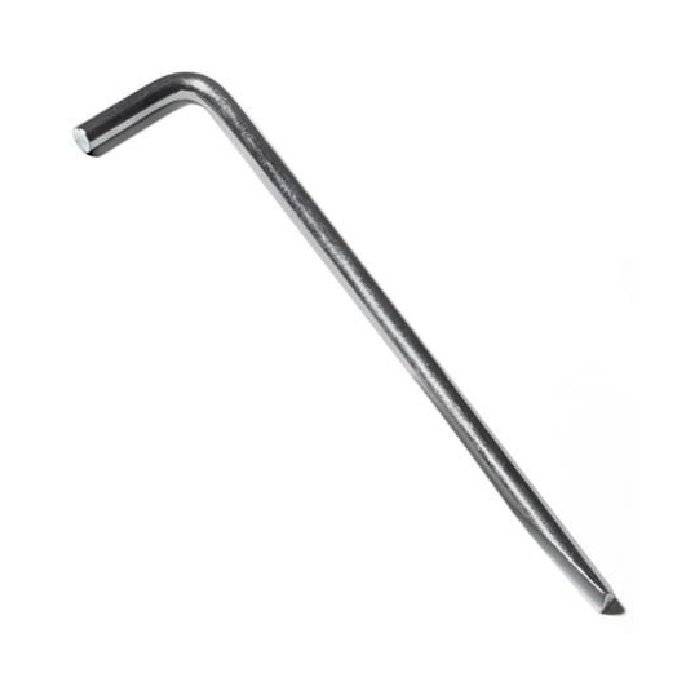
BEST HEAVY-DUTY TENT STAKES FOR CAR CAMPING
COST PER STAKE: $2
WEIGHT: 2.7 oz.
LENGTH: 8.25 in.
BEST USE: Car camping
PROS: Affordable, durable, easy to drive in/pull out, length provides good holding power
CONS: Heavy for backpacking, difficult to drive in without a mallet
BOTTOM LINE: The affordable and durable REI Steel Stakes are our go-tos for car camping. These stakes are heavy-duty and are over eight inches long, giving them excellent holding power in pretty much any type of terrain. But the ends are blunt, so come prepared with your favorite stake mallet to make driving them into compact ground a lot easier. Nine times outta ten, these are the stakes we’re using with our favorite large camping tents.
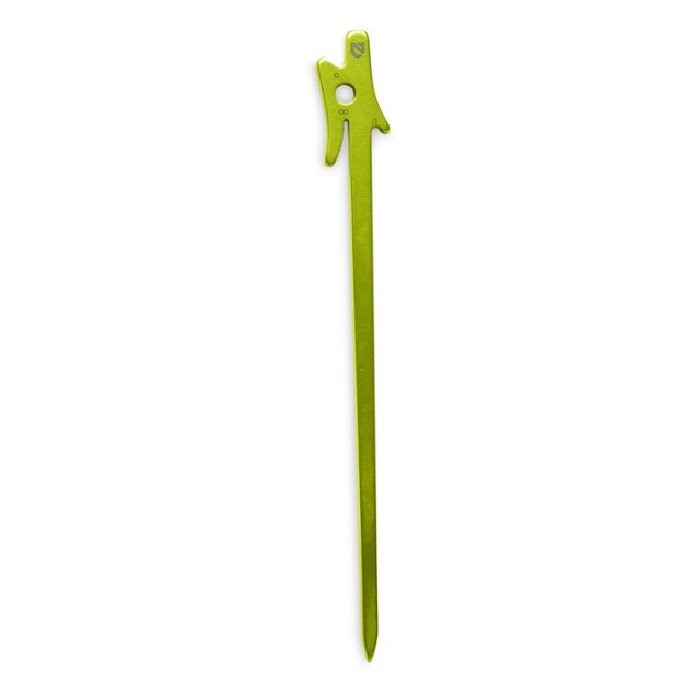
BEST ULTRALIGHT TENT STAKES
COST PER STAKE: $5
WEIGHT: 0.4 oz.
LENGTH: 6 in.
BEST USE: Backpacking; especially in compact/rocky terrain
PROS: Ultralight, very durable for how light they are, thin design makes it easy to get between rocks/roots, eliminates need for knots/tensioners on guylines
CONS: Holding power isn’t as good in soft ground, expensive
BOTTOM LINE: NEMO’s ultralight Airpin stakes have a unique design with a self-tensioning cleat head that allows you to secure guylines without the need for knots or linelocs. For DIY ultralight backpackers who like to swap out stock guylines and hardware on their tents and tarps, this means you can save even more weight by eliminating tensioners. We often bring a couple of these in our stake kit because they’re good backup if tensioning hardware fails, and their thin design makes them easy to use in rocky terrain where thicker stakes are more difficult to drive in. The Airpins are some of the more expensive stakes on our list, but their practical design, low weight, and durability makes them worth the cost in our opinion.
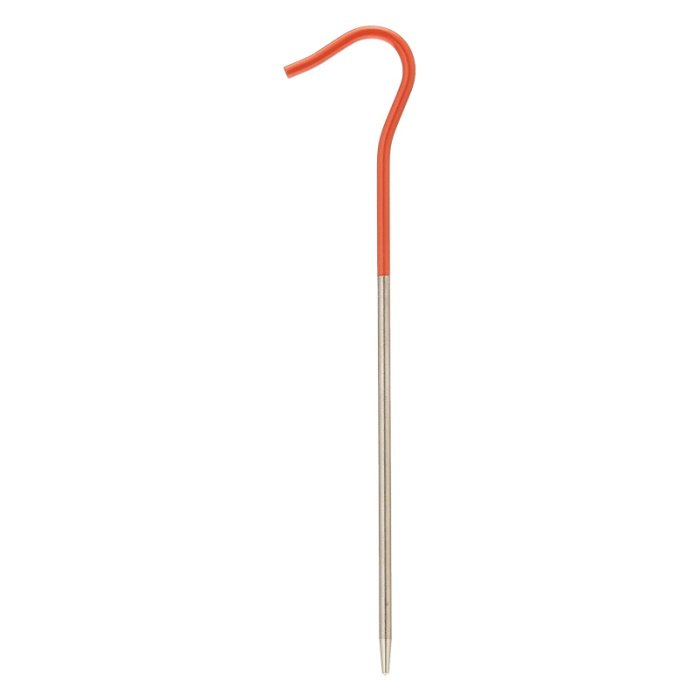
ULTRALIGHT TENT STAKES THAT WORK WELL IN ROCKY/COMPACT GROUND
COST PER STAKE: $3.75
WEIGHT: 0.3 oz.
LENGTH: 6.5 in.
BEST USE: Backpacking; good in packed soil & rocky terrain
PROS: Ultralight, thin design makes it easy to get between rocks/roots, high-visibility top, easy to drive in/pull out
CONS: Bends easily, holding power isn’t as good in soft ground
BOTTOM LINE: The ultralight Vargo Titanium Shepherds Hook stakes are super thin, so it’s very easy to slip them in between rocks and roots where other stake shapes might get stuck. The thin gauge also means they’re easier to bend, however titanium is pretty resilient and can bend quite a bit before it actually breaks. The shape and length limit their usefulness somewhat in soft or sandy ground, but it’s easy enough to make them work if you can find some heavy rocks to anchor them in with. The Vargo Shepherds hooks are the second lightest stakes on our list, but they’re nearly three times less expensive than the absolute lightest (the MSR Carbon Core).
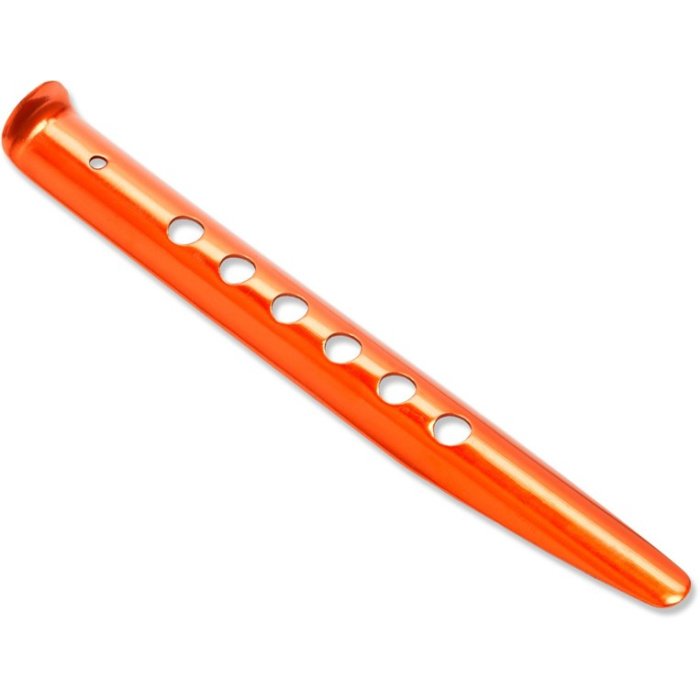
BEST SNOW STAKE
COST PER STAKE: $6
WEIGHT: 1 oz.
LENGTH: 9.6 in.
BEST USE: Tenting in snow/sand
PROS: Durable, good value compared to other snow stakes, excellent holding power in loose sand/snow, durable, high-visibility color
CONS: Not suitable for compact ground, more expensive than less specialized stakes
BOTTOM LINE: REI’s Snow Stakes have awesome holding power in soft snow and sand. They’re designed with a flat top that makes them comfortable to drive into the ground with your shoe, but their wide tip makes them impractical for use in compacted soil and icy snow unless you’re willing to dig out a hole to use them as deadman anchors. Some members of the CleverHiker team carry one of these on most backpacking trips since it can double as a tent stake and a cathole trowel.
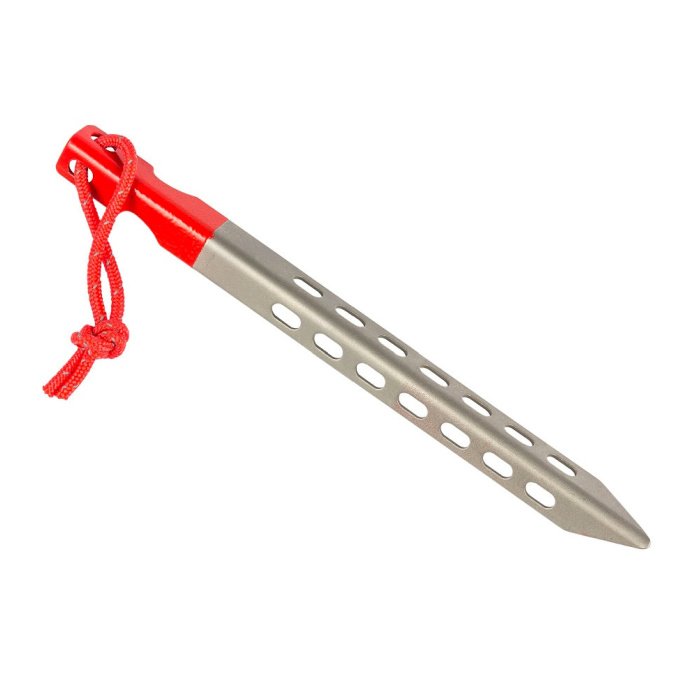
ULTRALIGHT TENT STAKES WITH GREAT HOLDING POWER
COST PER STAKE: $3.25
WEIGHT: 0.39 oz.
LENGTH: 6.5 in.
BEST USE: Backpacking
PROS: Ultralight, high-visibility top, good holding power, easy to pull out
CONS: Can be uncomfortable to drive in with your shoe, bends easily
BOTTOM LINE: The Zpacks V Stakes are much lighter and more affordable than other stakes made specifically for soft ground. We often bring a couple of these in our backpacking stake kit for better holding power on critical guylines in loose terrain. But they’re shorter and they bend easier than many other V-shaped stakes, so they may not be the best choice for building a full kit. That said, these stakes are still an excellent value for the holding power and low weight.
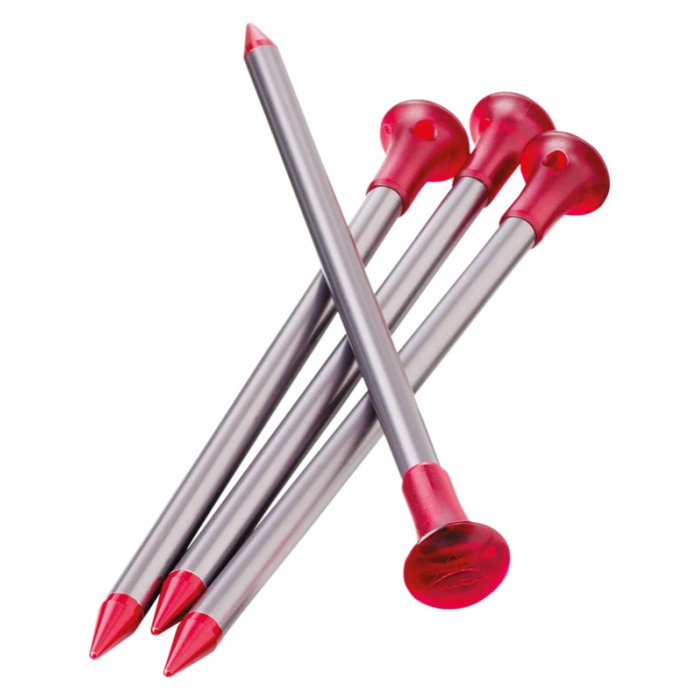
LIGHTEST TENT STAKES
COST PER STAKE: $11.75
WEIGHT: 0.2 oz.
LENGTH: 6 in.
BEST USE: Backpacking; works best in compact soil
PROS: Ultralight, high-visibility top, easy to drive in compact soil
CONS: Expensive, holding power isn’t as good as others, can be hard to remove, carbon fiber breaks instead of bending under stress
BOTTOM LINE: The MSR Carbon Cores are some of the absolute lightest tent stakes on the market, which means you’ll pay a premium price for them. These carbon fiber stakes hold well in compact soil, and their flat top and pointed tip make them very easy to drive into the ground. While these are the lightest option for gram counters, we don’t recommend using them as the sole stake type in your kit. For trips where saving every gram counts, we might bring four or five of these and two or three titanium or aluminum stakes. This is because the short length of the Carbon Cores makes them less effective in loose ground, the thicker diameter makes them slightly harder to use in rocky ground than thinner stakes (like the Vargo Shepherds Hooks), and carbon fiber will snap when under too much stress rather than bending.
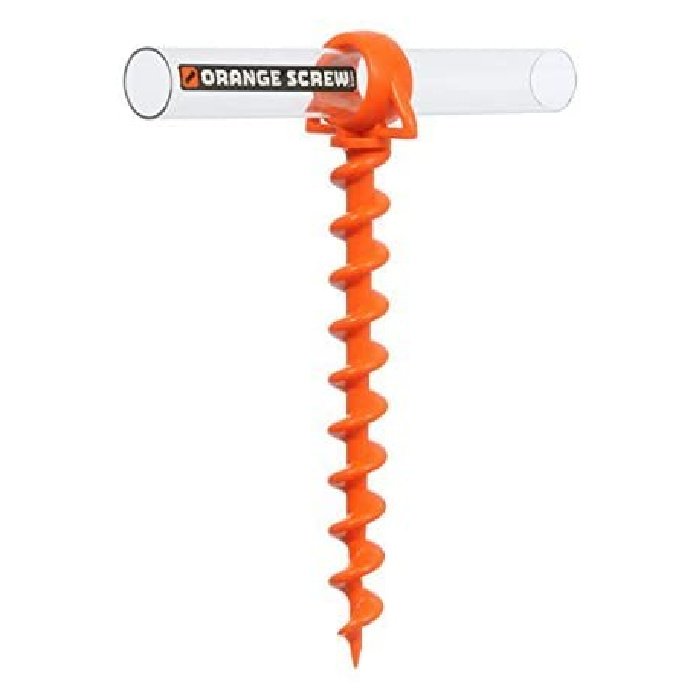
BEST TENT STAKES FOR ANCHORING LARGE SHELTERS IN SOFT GROUND
COST PER STAKE: $7.55 (small)
WEIGHT: 1.8 oz.
LENGTH: 9.5 in.
BEST USE: Car camping; especially on soft ground
PROS: Excellent holding power in soft ground, easy to screw into soft ground, eliminates need for stake mallet or driving in with your foot
CONS: Expensive, too heavy/bulky for backpacking
BOTTOM LINE: For windy days on the beach, we wouldn’t be caught without our Orangescrew Anchors. These stakes are perfect for anchoring down your camping tent or sun shade in loose sand or sediment, and will provide a more secure hold than any other stake type. We also like that the screw design means we can leave the stake mallet at home and we don’t have to try to drive a stake into the ground with our flip flops. The Orangescrews are quite expensive, though, so they may not be a practical purchase for those who do most of their camping in forests or in other areas with hard-packed ground.
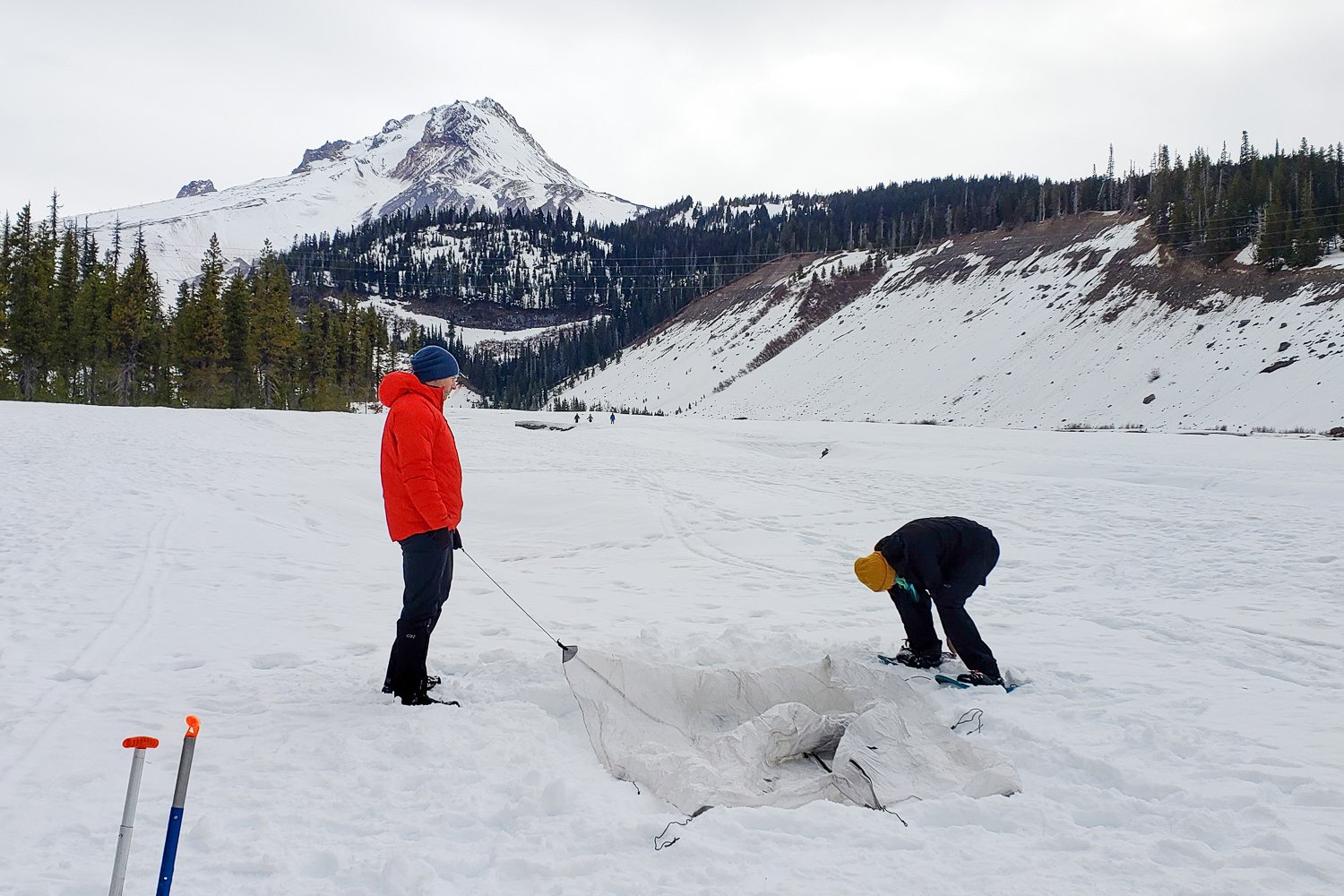
REI’s Snow Stakes are our go-tos for winter camping
Honorable Mentions
The following tent stakes didn’t make our final list, but they’ve still got a lot of good things going for them. You never know, one of these tent stakes might be perfect for you:
- Coghlans ABS Plastic – Very affordable and lightweight stakes for car camping; they work best when hammered in with a mallet, but they can bend or break somewhat easily in rocky or hard-packed terrain
- Coleman 10 in. Steel – Slightly more expensive than REI’s Steel Stakes, but a little longer for slightly improved holding power
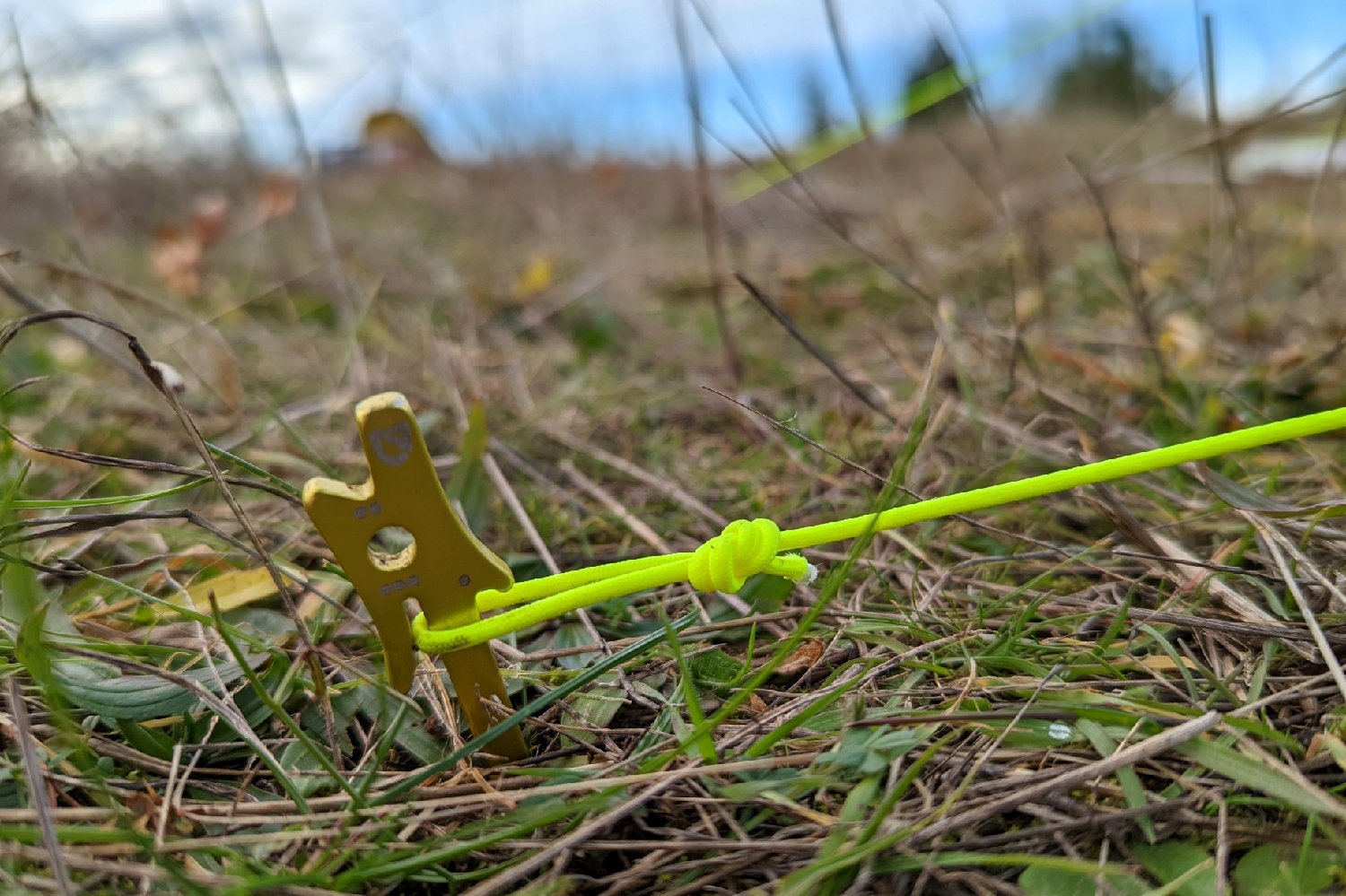
The NEMO Airpin stakes have an excellent balance of weight to durability
Critical Tent Stake Considerations
GETTING A SECURE HOLD – Getting a secure hold with your tent stakes can be critical to staying dry and comfortable in your shelter during inclement weather. Here are some tips to help maximize the holding power of your tent stakes:
- Drive your stake straight into compact ground to get it as deep as possible or at a very slight angle (away from the tent) in softer ground
- Stake guylines straight out from their attachment points, not at an angle
- Secure shorter/weaker stakes by placing a rock on top of them
- Face the most narrow side of your tent into the wind to reduce surface area that can catch gusts
- Stake out all additional tie-outs in high winds and heavy precipitation
- Using a rock or mallet to pound stakes in will reduce the risk of bending one
- Use the right kind of stake for the terrain (see TENT STAKE SHAPES below) – for backpacking, it’s a good idea to build your kit with a variety of stake shapes
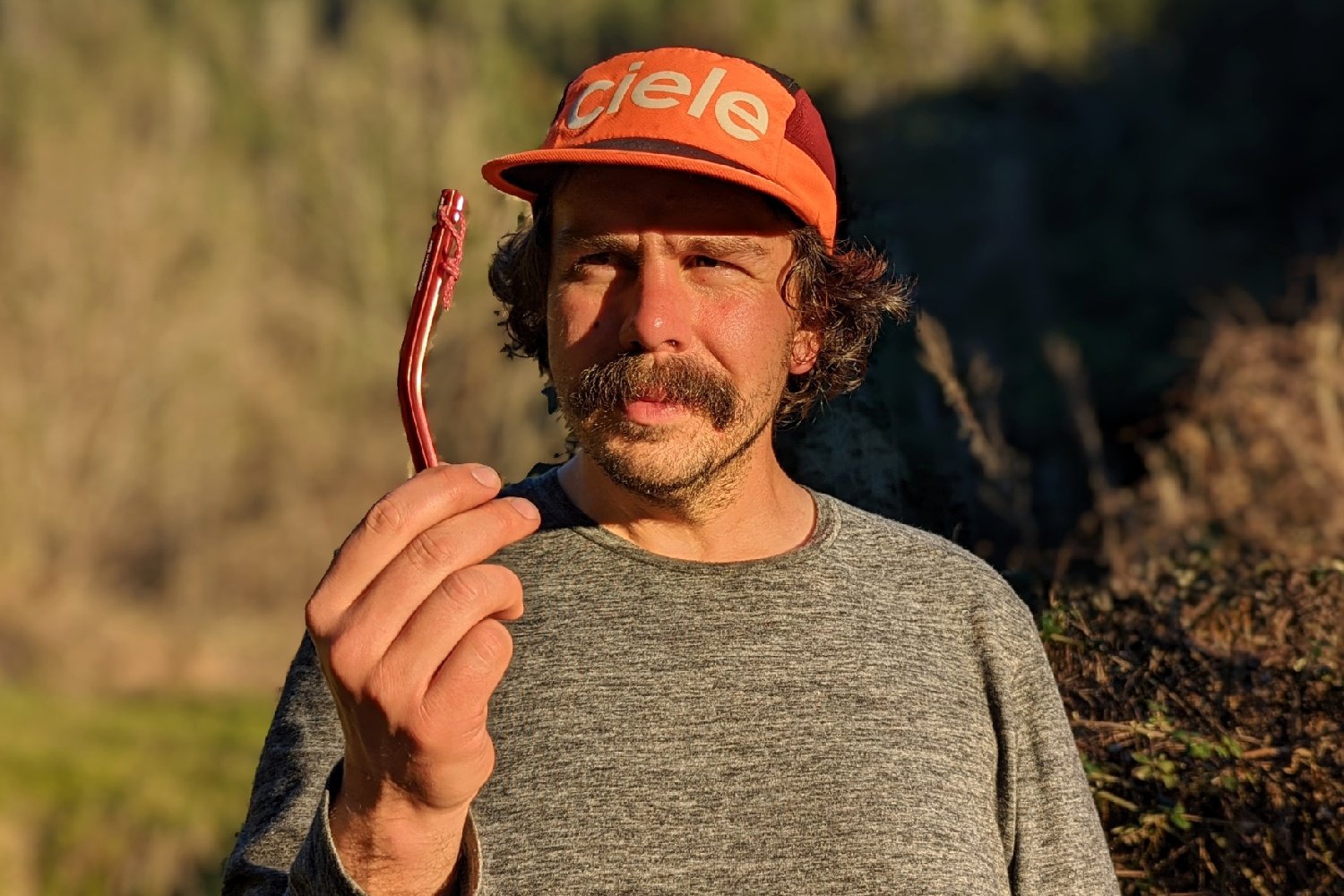
driving stakes in grdually with a rock, instead of using your foot, will help you avoid bending
TENT STAKE SHAPES– The shape of a tent stake will tell you everything you need to know about what type of terrain it will be most effective in.
- Y stakes – These stakes provide excellent holding power in all types of terrain. They’re more durable and harder to bend than other stake shapes, but they may be harder to get around rocks buried in the ground. (Example: MSR Groundhog)
- V stakes – Sand and snow settle into the holes in the shaft of these stakes, giving them excellent holding power in loose terrain. V stakes made from aluminum or titanium may bend easily if driven too hard into compact ground or rocks. (Example: Zpacks V Stake)
- Shepherds hook – These stakes are typically very lightweight. They’re thinner than Y and V stakes, so they’re easier to slip in between roots and rocks. That said, the thin diameter reduces their holding power and can make them bend more easily. (Example: REI Aluminum Hook)
- Nail – These stakes are typically very lightweight, but they usually have a less prominent notch for securing a guyline. Nail stakes with thicker diameters will have decent holding power, but generally this type of stake will need to be reinforced with a rock. (Example: MSR Carbon Core)
- Screw – A specialized stake shape that will provide excellent hold in any type of ground you’re able to drive them into. We typically use these for car camping or securing sun shades in sand. (Example: Orangescrew Ultimate Anchor)

Hook shaped stakes, like the REI Aluminum Hooks, may be easier to get in the ground than some other shapes, but they don’t hold quite as well
WHAT IF I CAN’T GET MY TENT STAKE IN THE GROUND? – In areas where the terrain makes it pretty much impossible to drive in a tent stake, you’ll almost always still have some options! Try tying your tent guylines off to large branches or wrapping them around heavy rocks. If you can’t find any suitable rocks or branches nearby, you can always weigh the interior corners down with heavier gear items as a last resort.

Sometimes you may have to get creative to secure your tent in tricky terrain
BEST GUYLINES – Most tents come with pre-attached guylines, but some – especially ultralight tents – will include them in the package but require you to attach your own. Either way, you may choose to switch the included guylines out for a lighter, stronger, or more visible option. Below are some of our favorites:
- Guylines with a great balance of strength to weight: HMG 2.8 mm UHMWPE & HMG 1.4 mm UHMWPE
- Ultralight high-visibility guylines: Zpacks 1.3 mm Reflective Z Line & Zpacks 1.3 mm Z Line
- Affordable & strong guyline: PMI 3 mm Utility Cord
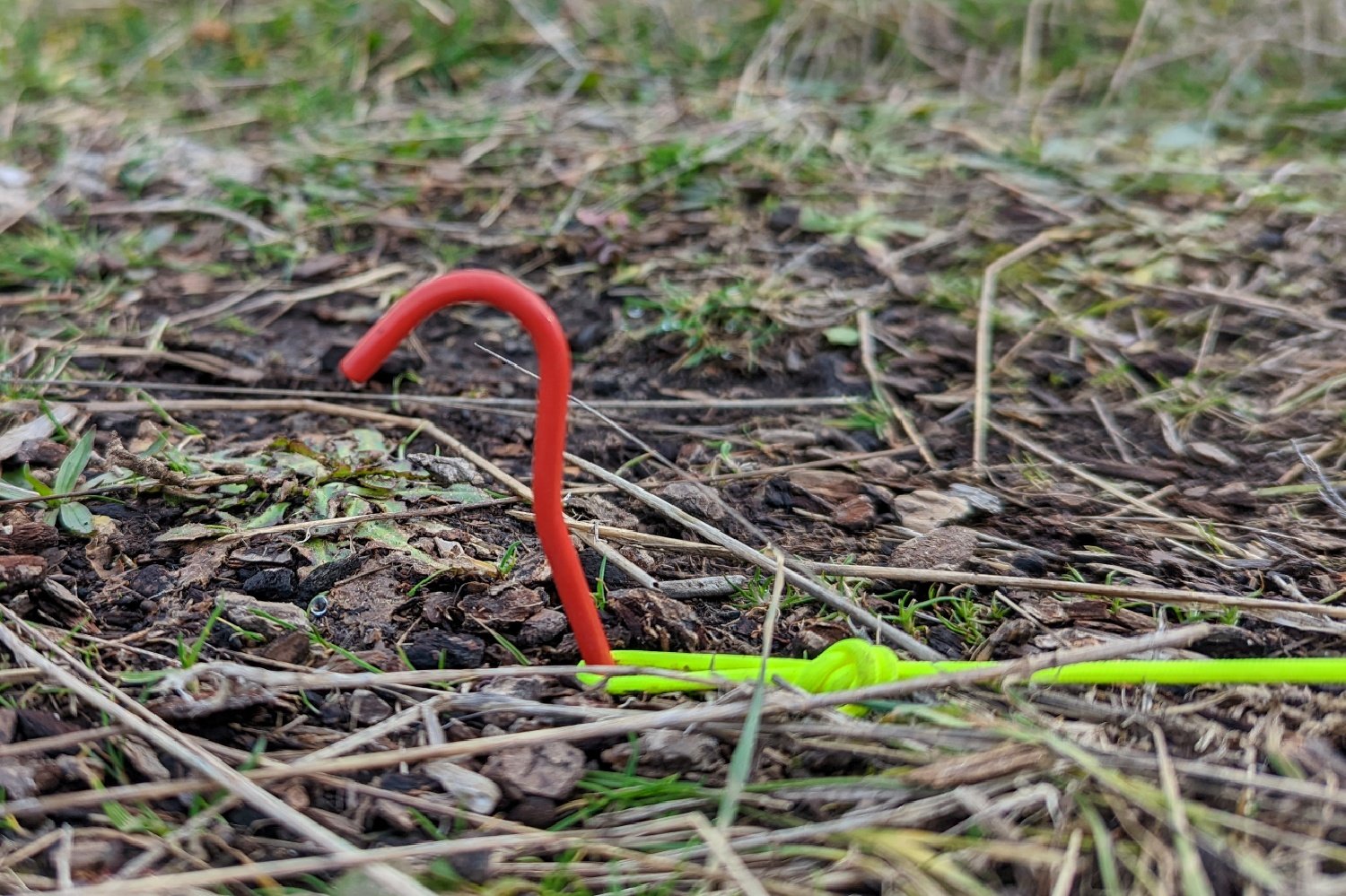
The Zpacks 1.3 mm Z Line is ultraight and easy to see
BEST TENT STAKE MALLETS – For frontcountry camping when weight is not an issue, we’ll often bring along a stake mallet to make quick work of pounding tent stakes into the ground.
- Best budget stake mallet: Coleman Rubber Mallet
- Durable metal stake hammer with a built-in bottle opener:MSR Stake Hammer
- Affordable & lightweight plastic stake mallet: Coghlan’s Tent Peg Mallet
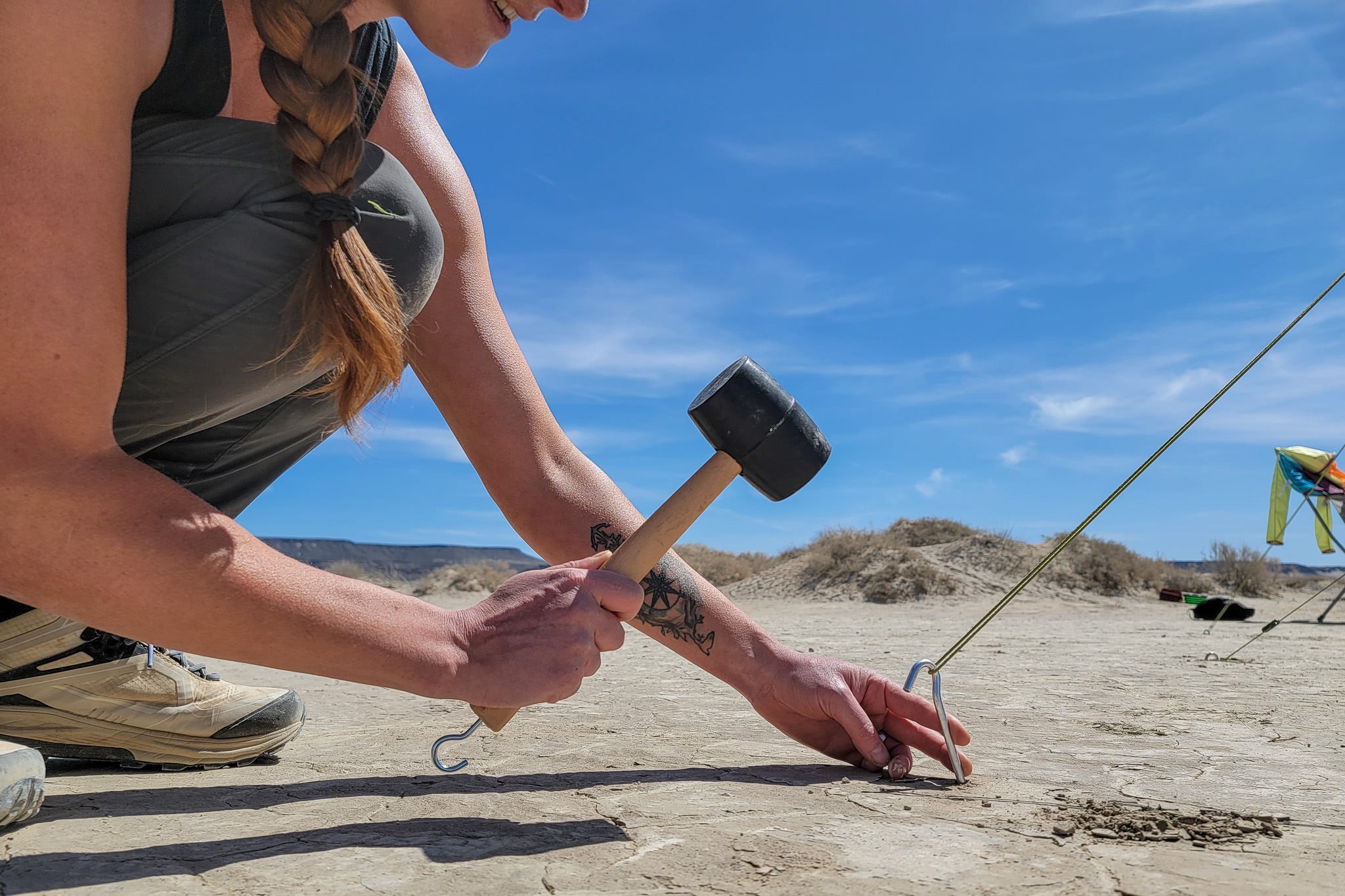
Coleman’s Rubber Mallet is affordable & effective
Need More Gear Advice?
If you liked this list, you’ll love the CleverHiker Gear Guide where we test and recommend tons of outdoor adventure gear from a variety of categories. here are some links to popular articles:
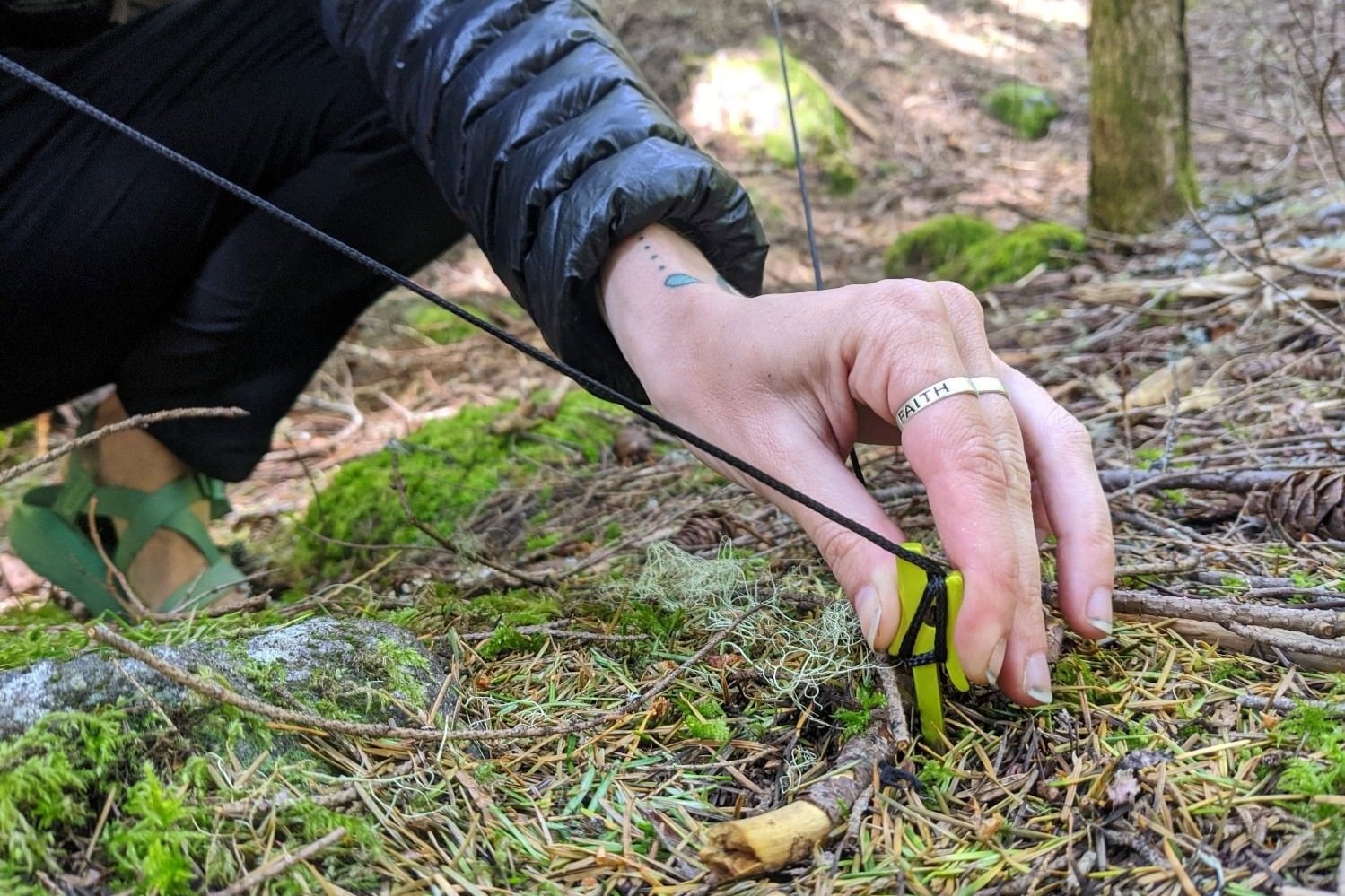
NEMO’s Airpin stakes have a cleat head that can secure guylines without loops
Why Trust Us?
We fully understand how tough it is to find trustworthy gear advice, and that’s one of the main reasons we built CleverHiker. We live for outdoor adventure, and we take these guides very seriously. Here are some of the reasons you can trust us:
- Our choices are completely independent and based on personal experience.
- We’ve logged over 10,000 trail miles and test outdoor gear for a living.
- We own and field test every product we recommend, which is sadly not the norm.
- We travel to industry trade shows to learn about upcoming product innovations.
- We constantly update our guides when new products launch.
- We treat our recommendations as if they were for our family and friends.
- We’re lifelong learners and we’re always open to constructive criticism. If you think we’ve missed a product or got something wrong, we’d love to hear your feedback.
More Information
We hope this guide helps you find the perfect gear for your needs. If you have more questions or a suggestion, we’d love to hear from you! Sign up for our newsletter to stay updated on our latest posts then visit our Facebook page and Instagram to join the community conversation.
If you found this guide helpful, please give it a share on social media! Also, be sure to check out our CleverHiker Gear Guide to see all of our top gear picks.
Thanks for reading and happy trails!
Some of the links on this page are affiliate links, which means we may receive a modest commission if purchases are made through those links. This adds no cost to our readers and helps us keep our site up and running. Our reputation is our most important asset, which is why we only provide completely honest and unbiased recommendations.


